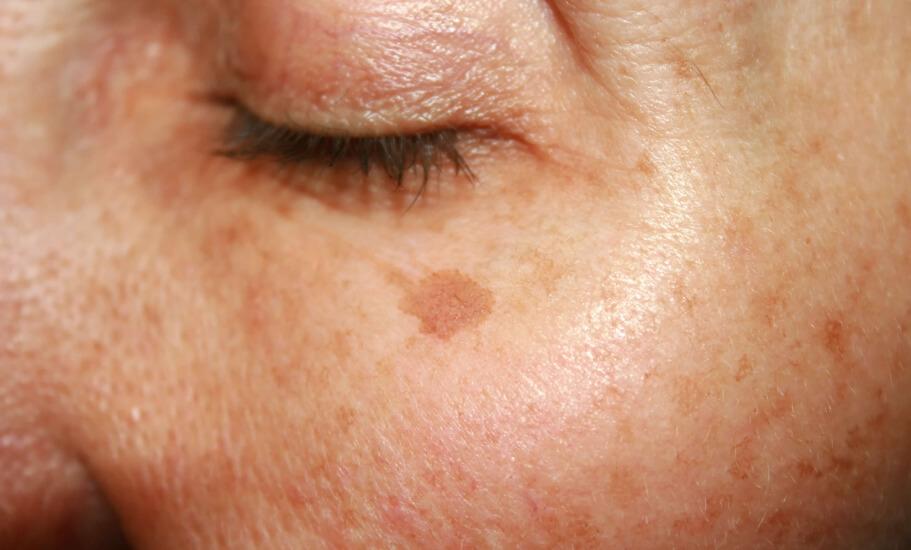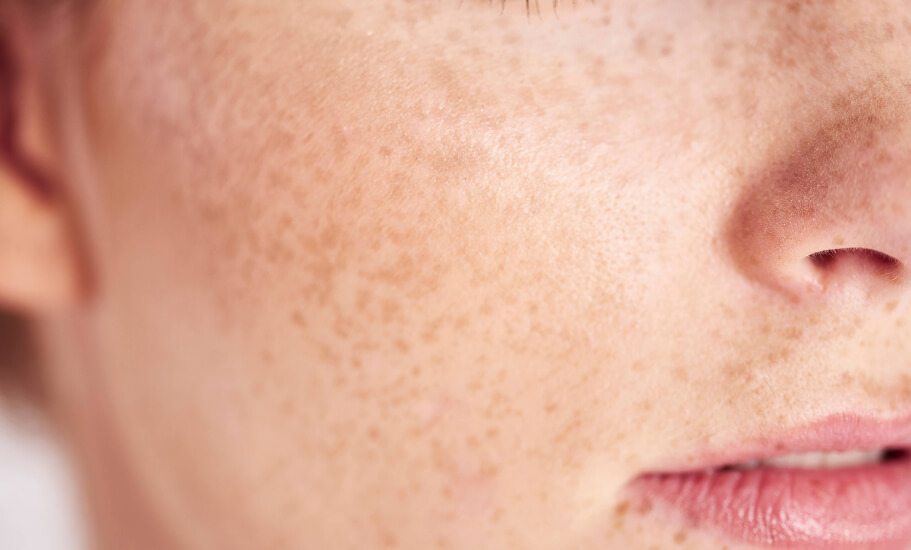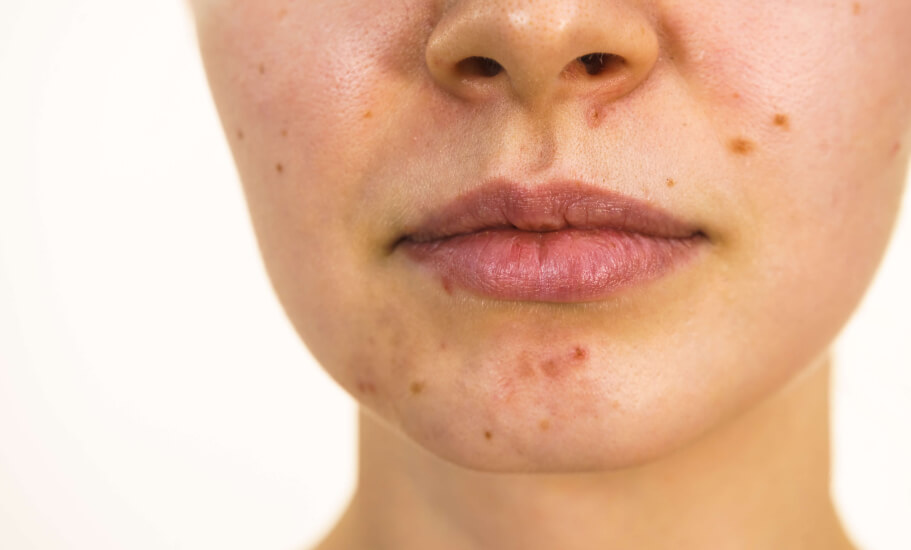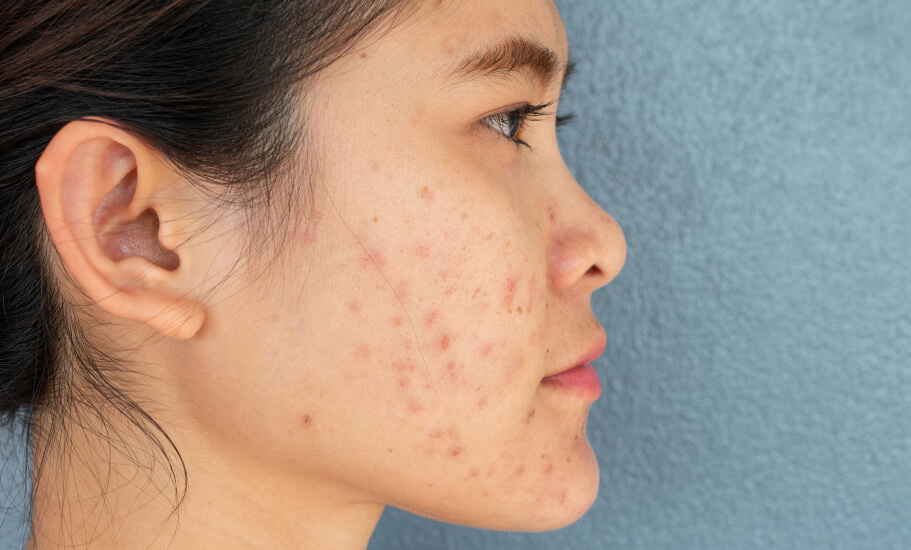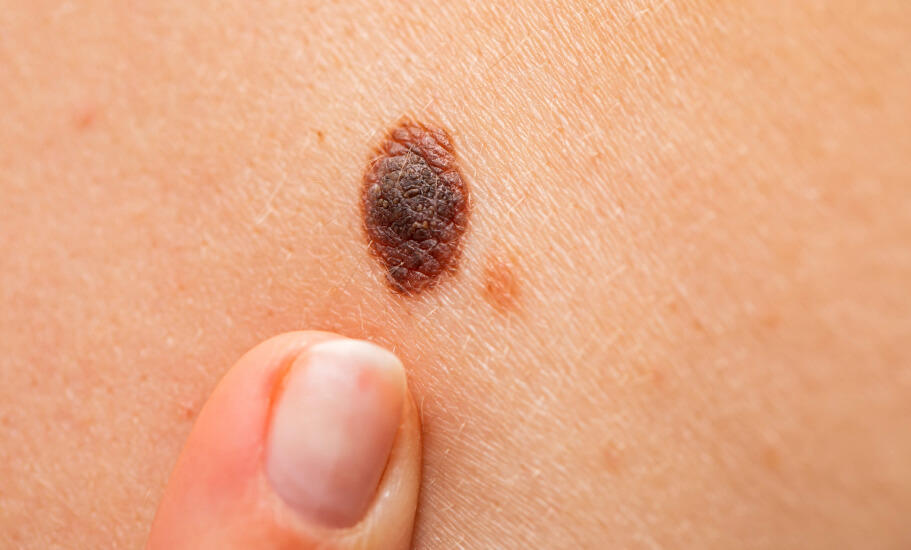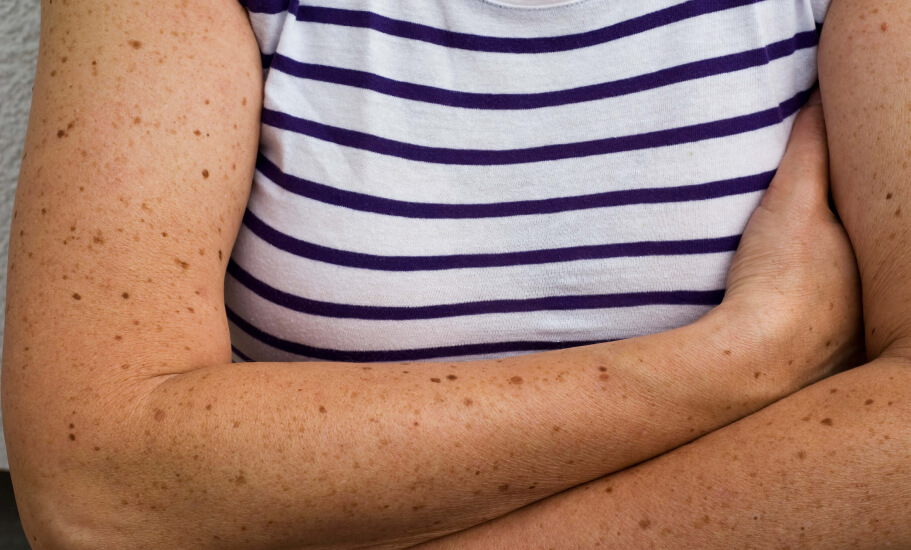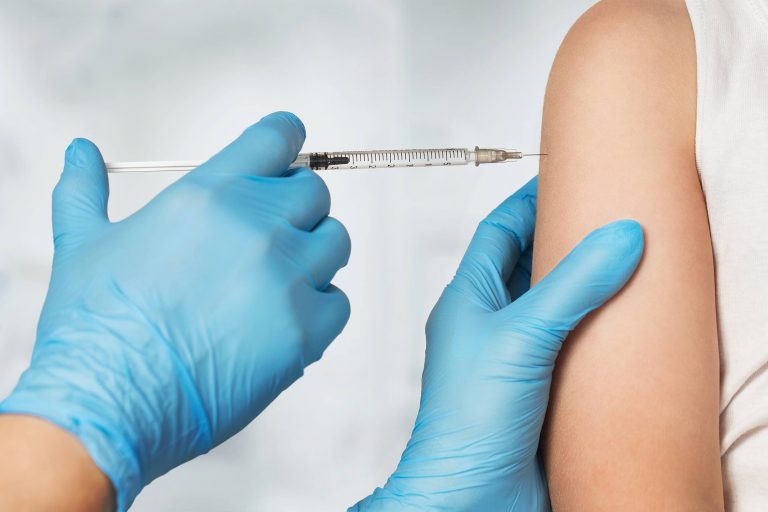What is pigmentation?
Pigmentation is any skin discolouration that is commonly caused by UV ray exposure, hormonal changes, genetics, skin injuries and medications. Pigment cells called melanin are produced by melanocytes in the skin.
Our Approach in Treating Pigmentation
There are many types of pigmentation. Book a consultation with our doctors and they will customise a treatment plan specific to your needs.
What is Pigmentation?
Pigmentation is any skin discolouration that is commonly caused by UV ray exposure, hormonal changes, genetics, skin injuries and medications. Pigment cells called melanin are produced by melanocytes in the skin. Genetically, Asians have higher melanin content compared to individuals from other races and are generally more susceptible to pigmentation conditions. Furthermore, in Singapore, having strong year-long sun exposure further increases Singaporeans’ susceptibility to sun damage in the form of pigmentation conditions.
What are the different types of pigmentation?
The common types of skin pigmentation are:
Melasma
One of the most common forms of pigmentation, these are large, brown patches that appear on the forehead, cheeks, and upper lip. These patches may become darker after sun exposure. Melasma can be triggered by a combination of factors such as ancestry and genetics, sun exposure, and hormones.
Freckles
Another very common form of pigmentation, freckles usually occur in brown or beige shades of flat small circles. Freckles often appear as a darker shade than the skin. They are sometimes caused by excessive exposure to sunlight, and especially affects women who have fairer skin. Freckles can also be hereditary.
Post Inflammatory Hyperpigmentation (PIH)
Post-inflammatory hyperpigmentation is often seen as dark spots on the face after acne has resolved. Hence, PIH is sometimes mistaken for acne scarring.
Post-inflammatory hyperpigmentation is generally caused by trauma to the skin such as burns, excessive rubbing, rashes, or irritation to the skin caused by chemicals. Eczema is also known to cause post-inflammatory hyperpigmentation.
Seborrheic Keratosis
Distinguished as light brown or black spots on your face, seborrheic keratosis bumps have a rough texture, look waxy, scaly and slightly raised.
These are typically found in older women or those who have a family history of Seborrheic Keratosis.
Solar Lentigo (Age Spots)
A common form of pigmentation in people over the age of 40, solar lentigo happens when UV rays cause melanocytes in the skin to multiply. They not only appear on the face, but all areas of the body that have prolonged exposure to the sun.
What are the causes of pigmentation?
Skin pigmentation occurs when there is excessive production of melanin, which can be caused by a wide variety of factors, including but not limited to sun damage, genetics, exposure to extreme heat, hormones, and inflammation.
Excessive Sun/UV Light Exposure
This is the number one cause of pigmentation. Excessive exposure to UV rays, whether from sun exposure or other forms, can damage your melanocytes. This may cause an overproduction of melanin, resulting in pigmentation of the skin.
This is further exacerbated in Singapore due to the year-round summer sun we are constantly exposed to. Prolonged sun exposure without proper sun protection significantly increases Singaporeans’ susceptibility to sun damage.
Exposure to Pollutants
Chemicals, both acid or alkaline, can irritate the skin. This irritation leads to overactivity of melanin production.
Skin Inflammation/Injury
Skin Inflammation or injuries such as acne lesions or psoriasis are common causes for a pigmentation condition called post-inflammatory hyperpigmentation. This usually occurs as a result of trauma to the skin, stimulating melanocytes to increase melanin production. Examples are: attempting to pop a pimple or excessively scratching your face.
Hormonal Changes
Hormonal changes due to pregnancy is a common trigger for pigmentation conditions like melasma. Estrogen and progesterone are thought to stimulate the overproduction of melanin when the skin is exposed to the sun.
Medication
Some medications increase your sensitivity to UV rays from sun exposure or other lights, a reaction known as photosensitivity. Common medications that cause photosensitivity are antibiotics like doxycycline, retinoid acne medications and oral contraceptives.
Excessive Heat
Heat is known to cause pigmentation, even when not exposed directly to sunlight. This is further exacerbated in Singapore due to the year-round tropical climate we are constantly exposed to.
Genetics & Ancestry
Individuals with darker skin types may be genetically predisposed to have a higher susceptibility to skin pigmentation. A family history of pigmentation conditions can also increase the chances of skin pigmentation for an individual.
Pigmentation Removal Treatment
Skin pigmentation conditions are treatable. Each individual has different types of skin conditions and may have had a different trigger which caused the pigmentation condition. Book a consultation with our doctors and they will customise a pigmentation removal treatment plan specific to your skin type and needs.
Lightening Creams
Lightening creams are treatments that contain ingredients to help lighten pigmentation. These creams are available over the counter or through prescriptions. They’re usually applied once or twice a day to help lighten the skin over time but these will take a longer time to work.
Common Ingredients found in lightening products include:
- Hydroquinone
- Licorice extract
- N-acetylglucosamine
- Niacinamide
Retinoids
Retinoids are useful in the treatment of pigmentation because they curb the production of melanin and speed up cell turnover. The most commonly prescribed form of retinoid is Tretinoin. You should use retinoids only as instructed by your doctor as overusing may cause irritation, excessive dryness and discolouration of the skin.
Chemical Peels
Chemical peels use a stronger concentration of acids to treat the skin. They reduce the appearance of hyperpigmentation by removing the epidermis. Chemical peels may not be the best option for you if you’re out in the sun on a regular basis, as they can cause your skin to be more sensitive to the sun’s rays and pigmentation may worsen if UV protection is not adequately applied.
Laser
You can consider non-invasive and non-ablative lasers technology to destroy and remove pigment cells, targeting the desired layer of the skin without disrupting the skin layers above.
1. Q-switched Nd:YAG laser treatment:
The laser treatment penetrates into the desired layer of the skin with pigmentation and effectively blasts pigment cells into micro pieces. After that, these pigment cells are naturally removed by the skin by the skin’s natural removal process. At the same time, the laser energy stimulates skin-boosting collagen production and rejuvenates the skin, resulting in better-textured skin, improved pores and reduction in fine lines. By reducing the number of pigment cells, the dark spots will be removed and there will be an overall brightening effect on the face.
2. Picosure Laser
PicoSure employs a 755 nm Picosecond Alexandrite laser. Its low heat output, combined with the swift pulsing of the laser, generates a powerful photomechanical effect, enabling the delivery of more laser shots to the targeted dermal layer. When combined with its patented proprietary Focus Lens Array, which utilizes a diffractive lens for skin rejuvenation, it enhances outcomes related to pigmentation, skin texture, and acne scars.
Exosomes
Exosomes are tiny vesicles naturally produced by cells and contain various bioactive molecules, such as proteins, lipids, and nucleic acids. They play a role in cell-to-cell communication, promoting various functions such as skin rejuvenation, decreasing skin inflammation, reducing pigment and stimulating hair growth.
Simultaneously, the exosomes regulate melanin production, resulting in a brighter and more even skin tone. These effects occur on a cellular level, not just at the external surface.
Dual Wave RF (Sylfirm X)
Sylfirm X uses multiple tiny electrodes to send uniform electromagnetic field of energy that safely penetrates the dermal layer at targeted depth. It is able to target abnormal blood vessels in the dermis which contribute to rosacea and melasma.
Hyfrecator®️
The hyfrecator is used to rapidly and selectively destroy tissue by the passage of an electric current through the tip of s the hyfrecator as it touches the skin. This can be used to burn off the tissue and treat conditions like Seborrheic keratosis.
Skin Supplements
Skin-brightening supplements have risen to popularity as many people have started integrating supplements into their daily skincare regime to complement their topical products for enhanced results. This is especially in Asia where sun exposure is high and contributes to skin pigmentation and aging. They are usually formulated with concentrated doses of active ingredients and antioxidants that work from the inside out to provide both skin whitening and sun protection in each dose.
Some factors you should consider before taking the skin supplements:
- The dosage and concentration of the active ingredients:
Any protection against UV damage?
Any decrease in melanin production?
Any antioxidant and anti-inflammatory effects to improve skin texture and fight against skin ageing? - The country of production:
Is the country reputable? Any supporting certification to ensure safety in consumption? - The reliability of the manufacturers:
Are the active ingredients used made from good quality sources and safe for consumption? Any tests run for Product Safety?
FAQ About Pigmentation Treatments in Singapore
-
Which pigmentation removal treatment should I choose?
All our pigmentation removal treatments are suitable for all skin types and carry minimal risk.
However, every individual has different skin types, skin conditions and family history. Book a consultation with us now and our doctors will be able to recommend the best treatment plan according to your specific skin type and needs.
-
Are there any side effects?
For the laser treatments and chemical peel treatments, some mild redness could occur but should go away in no time. Our doctors will also prescribe aftercare creams to ensure optimal results.
-
How long do the results last? Will my pigmentation come back?
For optimal results, you should follow the number of treatment sessions recommended by the doctor closely. The doctors may also recommend treatments to be combined with topical creams to further treat your pigmentation condition effectively.
After you have completed the pigmentation removal treatment, it is recommended to come back for maintenance treatments to ensure long-lasting results. Proper skincare and sun protection regimes should also be adopted, especially in Singapore’s sunny climate. All these factors can effectively reduce the chances of your pigmentation from coming back.
-
Can Pigmentation Be Prevented?
Not all pigmentation can be prevented. Measures should be taken in our lifestyle and skincare regime to minimise the onset or worsening of pigmentation as the biggest culprit is sun exposure. One should try to minimise strong sun exposure and adopt sun protection measures with both topical and oral UV protection where possible.
Every individual has different triggers, causes and family history which affects pigmentation. At Fusion Medical, we offer a wide variety of treatment options for pigmentation removal, to ensure that we cater to your every need.
Our pigmentation removal treatments are suitable for all skin types.
At Fusion Medical, we understand your frustration in dealing with pigmentation conditions. Book a consultation with our doctors and they will customise a pigmentation removal treatment plan specific to your needs.
About Fusion Medical
Fusion Medical was set up in the year 2015. Our founders, being passionate about offering one-stop quality healthcare services at affordable rates, decided to set up an Executive Medical Centre equipped with diagnostic and imaging equipment under one roof to provide convenience to our patients. Diagnostic and imaging equipment include X-Ray, Ultrasound, Treadmill, Echocardiogram, Tonometry, Mammogram, Retinopathy and Bone Densitometry.
Visit Us
Start your skin health restoration journey with us today!
Fusion Medical @ Wheelock
501 Orchard Rd #04-11, Singapore 238880
Mon-Fri :8:30am – 5:30pm
Sat :8:30am – 1:00pm
Sun / PH :Closed
Fusion Medical @ Fusionopolis
1 Fusionopolis Link, #01-05 Nexus
@ One-North , Singapore 138542
Mon-Fri :8:30am – 5:30pm
Sat/Sun / PH :Closed
Why Choose Fusion Medical
We Make Things Easy For You
Our clinic is centrally located in Wheelock Place, giving you easy access to quality healthcare services whenever you need it. Appointments are easy, too. Request an appointment online or call us.
Female Doctors Who Understand You
Our female doctors offer a broad range of screening and medical services, personalised just for you. Doctor-patient relationships can last a lifetime, and we believe that it is important to have a doctor who truly understands you. We strive to do the best we can to make you feel comfortable.
Fully Equipped Clinic
We are committed to meeting your specific needs at our clinic. Our clinic is fully equipped with diagnostic and imaging equipment to provide one-stop convenience for you.


